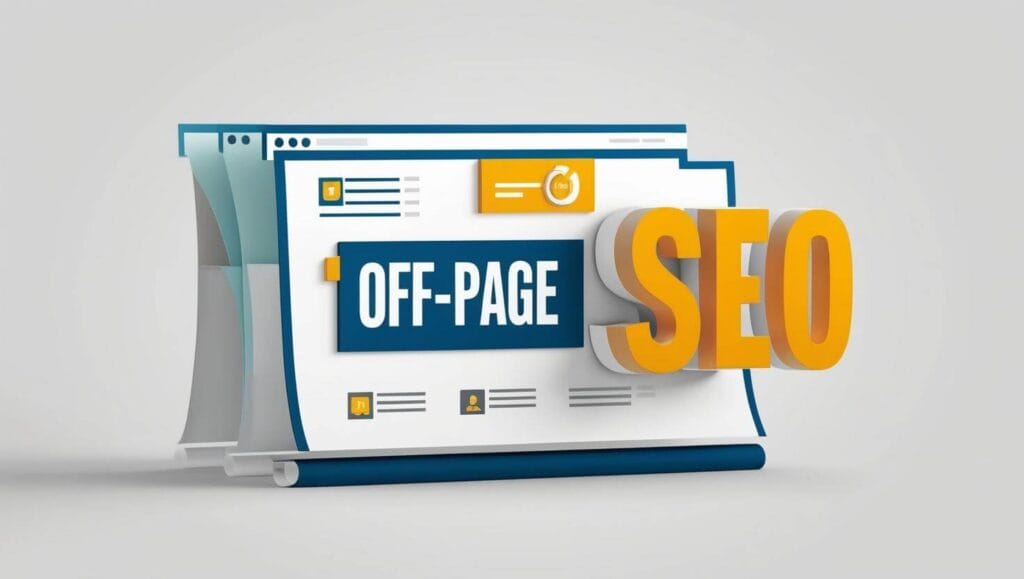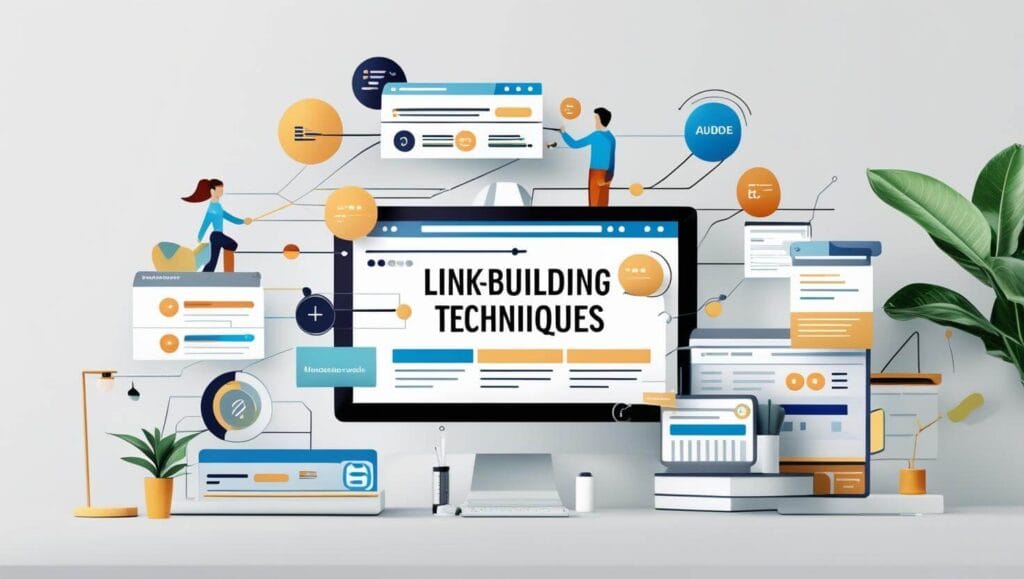8 Advanced Link Building Techniques to Outrank the Competition

If you’re here, you’ve probably heard about guest posts, directory links, and broken link outreach. But they’re also overused, and often easy for competitors to copy.
To really stand out in competitive search results, you need to go further. That’s where advanced link building techniques come in. These are smarter, more strategic methods that earn links from high-authority sites, boost trust, and actually move rankings.
Whether you’re trying to dominate your niche or build authority fast, these techniques are built for serious results.
New to link building? You might want to start with our beginner’s guide to link building that includes 10 proven basic link building techniques.
Or, if you want to learn more about how links fit into the bigger picture, check out our off-page SEO guide.
Why Advanced Link Building Is a Game-Changer For Your Off-Page SEO
Basic link building can only take you so far. Advanced link building techniques are what separate average sites from real industry leaders.
You’re not just chasing any backlinks. You’re earning links that boost credibility, brand authority, and long-term rankings. Google’s algorithm has evolved. It now rewards quality over quantity, context over shortcuts.
They help you build links from high-authority websites your competitors can’t easily replicate. With the right advanced tactics, you don’t need to rely on spammy outreach or outdated directory submissions. Instead, you attract backlinks naturally.
These techniques focus on quality signals that Google actually pays attention to: topical relevance, domain authority, and editorial placement. You’ll build a backlink profile that looks organic, diverse, and earned.
This will result in more stable rankings, fewer penalties, and stronger off-page SEO performance across the board.
Advanced link building techniques also scale better. You can systematize outreach, automate discovery, and prioritize high-impact opportunities. They save you time while generating links that actually move the needle.
As they align with white-hat SEO, you can grow sustainably without fear of future updates.
8 Advanced Link Building Techniques
1. Digital PR with Original Data
Want backlinks from top-tier media? Give them something worth quoting. Digital PR is one of the most powerful advanced link building techniques. It works by using unique data to earn high-authority links from news sites, blogs, and industry publications.
You don’t need a massive budget. Just data people want to share.
How to do it:
- Choose a topic your audience cares about.
- Collect original data through surveys, internal stats, or public datasets.
- Turn your findings into a clear, visual report or infographic.
- Pitch it to relevant journalists and bloggers in your niche.
- Use platforms like HARO, Terkel, or Qwoted for outreach.
Make your content newsworthy. Tie it to trends or seasonal topics. The better the hook, the more links you’ll earn.
This method brings natural, editorial backlinks that are hard for competitors to copy.
2. Unlinked Brand Mentions
There are websites already talking about you, but not linking to you. Unlinked mentions are low-hanging fruit. You’ve already earned the visibility. Now you just need to claim the link.
This advanced link building technique has a high return.
How to do it:
- Use tools like Ahrefs, BrandMentions, or Google Alerts.
- Search for your brand name, product, or CEO without links.
- Reach out with a polite email.
- Thank them for the mention and ask for a clickable link.
- Provide the exact URL you’d like linked.
Keep your pitch short, friendly, and helpful. You’re just fixing a missed opportunity, not asking for a favor.
3. Broken Link Replacements
There are broken links everywhere, including links that used to point to your competitors. You can win backlinks by offering a replacement for dead content.
It’s a time-tested but still underused advanced link building technique that earns editorial backlinks fast.
How to do it:
- Use Ahrefs or Screaming Frog to find broken outbound links on blogs in your niche.
- Filter links that match topics you cover.
- Create (or repurpose) content to replace the dead page.
- Email the site owner offering your content as a replacement.
- Keep it helpful and non-pushy.
Most webmasters appreciate being told about broken links, especially when you give them a fix.
4. Programmatic Resource Pages
Educational and government sites often link to useful resource pages. You can build those!
With programmatic SEO, you can generate hundreds of high-value pages that attract links organically.
It’s one of the smartest advanced link building techniques for white-hat backlinks.
How to do it:
- Identify broad topics with high informational value.
- Use data or APIs to create dynamic content — maps, lists, stats, etc.
- Generate multiple landing pages from one template.
- Target .edu, .gov, or .org resource curators.
- Submit your pages where they match existing resource needs.
These pages often attract links passively over time.
5. Expert Roundup Inclusions
Want backlinks and authority at the same time? Get quoted in expert roundups. It’s a reputation-based link building method that works in most niches (especially B2B and info products).
These are curated articles where multiple experts share insights. Each gets a backlink.
How to do it:
- Search for roundups in your niche using Google: “keyword + expert roundup.”
- Follow journalists and bloggers who write these posts.
- Reach out offering a valuable quote on a current topic.
- Include a short, punchy answer and a clean bio with your link.
- Respond quickly — editors love fast replies.
Once you get featured once, it becomes easier to get invited again. This builds links, authority, and even referral traffic if the roundup ranks well.
6. Linkable Interactive Tools
Tools don’t just get used, they get linked. Interactive tools are high-ROI assets that attract backlinks from bloggers, content marketers, and educators.
They also add user value, which helps engagement and conversions.
How to do it:
- Identify a common task or problem in your niche.
- Build a calculator, quiz, or generator to solve it.
- Make sure it’s easy to use and mobile-friendly.
- Publish it on a dedicated landing page.
- Promote it through outreach and directories.
Example: A mortgage calculator, SEO audit tool, or blog title generator.
Once your tool gains traction, it can build links without constant effort. It’s one of the few link building techniques that scales passively.
7. Podcast Guest Link Building
Podcasts are booming and come with valuable backlinks. When you appear on a podcast, you usually get a link from the show notes, blog post, and promotion.
It’s personal, brand-driven, and great for authority.
How to do it:
- Research niche podcasts using ListenNotes or Podchaser.
- Pitch the host with your unique angle or story.
- Share past speaking experience or audience insights.
- During the episode, mention your site naturally.
- Request a link in the show notes or description.
Don’t overlook smaller podcasts. They’re often more open and still rank in Google. This builds trust, visibility, and links.
8. Contextual Link Partnerships
Sometimes, the best links come from real relationships. Contextual link partnerships mean working with other site owners to include your link naturally within content.
This technique is underused but incredibly effective.
How to do it:
- Build relationships with other content creators in your niche.
- Offer to include their link where relevant on your site.
- Ask for the same in return — within useful, editorial content.
- Focus on deep, natural placements, not footers or sidebars.
- Keep it clean and white-hat.
It’s not a link exchange. It’s mutual value. When done right, this method builds authority without the spammy feel.
The 3 Advanced Link Building I Use
I’ve tried dozens of tactics over the years, but only a few consistently deliver high-quality backlinks. These three advanced link building techniques are my go-to methods. I use them regularly because they’re effective, scalable, and hard for competitors to replicate.
1. Linkable Tools
Out of everything I’ve built, nothing pulls in links quite like a good tool. It works while I sleep. People love using tools that save them time, and bloggers love linking to them because they add value to their content.
The best part? You only have to build it once. After that, it becomes a passive backlink machine. I like this technique because it scales without constant outreach. You’re not begging for links, people are linking because your tool is genuinely useful.
Want to make it work for your niche? Start by identifying a pain point your audience faces regularly. Then think: can I solve that with a calculator, generator, or analyzer? Even small tools, like a headline generator or pricing estimator, can do the job. Just make sure it’s easy to use, fast, and mobile-friendly.
Once it’s live, promote it through directories, content roundups, and outreach to relevant blogs. Over time, links will come organically.
This is easily one of the most underrated advanced link building techniques, especially for long-term ROI.
2. Broken Link Building
Broken link building gets mentioned a lot. I still use it, because it works. What I love about this technique is that it feels like a win for both sides. The site owner gets to clean up their page, and I get a quality backlink.
Here’s how I approach it: instead of scanning random blogs, I reverse-engineer competitor backlinks. I find dead pages they once ranked for, then I create something better.
If their content was a 6/10, I make mine a 9. Better structure, updated info and improved visuals. Then I reach out to anyone linking to that dead page with a quick, friendly message and offer my version as a fix.
This tactic gives me editorial backlinks from relevant sites with real authority. It’s not flashy, but this method has built some of the strongest links in my portfolio.
For me, broken link building isn’t outdated. It’s just misunderstood. Done right, it’s one of the smartest advanced link building techniques out there.
3. Digital PR
My favorite method is digital PR. If I could only use one method to build links, it would be this one.
it gets you links from top-tier sites. Not just niche blogs, but actual media outlets. And those links carry serious authority.
I usually start with a data-driven angle: a unique survey, internal stats, or a trend I’ve spotted in client campaigns. Then I turn it into something newsworthy, for example a short report or a simple infographic.
Next comes the outreach. I send pitches to journalists and bloggers who cover that topic. I keep it tight, relevant, and valuable. When it lands? You get backlinks from sites with domain ratings in the 70s, 80s, or higher. That kind of authority moves rankings.
What I love most about digital PR is how versatile it is. You can tailor campaigns to nearly any industry. You can use seasonal hooks, trending topics, or even reactive PR based on breaking news.
It does take some effort, but the payoff is huge. These links are nearly impossible for competitors to copy, and they make your site look like a true authority.
Out of all the advanced link building techniques I’ve tested, digital PR brings the best blend of traffic, authority, and brand visibility.


